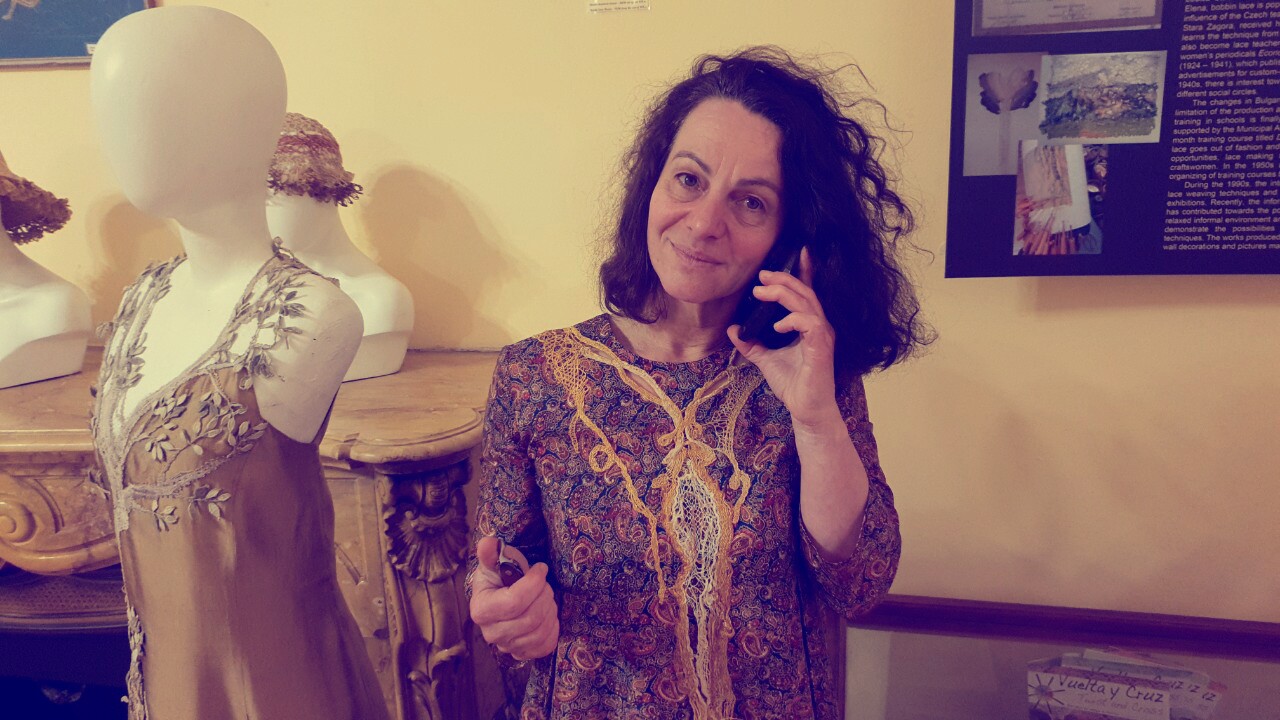Improvisation is a personal process that embodies one’s individual freedom and thus, each person is characterized by their own distinctive creations. Is it possible to learn how to be free? One is attracted to freedom only if they perceive their current situation as insufficient and want it changed. What seems natural, customary and easy for one, may seem unachievable, mysterious or impossible for someone else.
I will transfer these questions, that are relevant to any sphere of human activity, to bobbin lacemaking. Can work of bad quality be an excuse for the desire to work without any restrictions? How does one decide which limitations and rules are to be kept and which can be modified? Where is the dividing line between the permitted and the unacceptable?
My work is free improvisation. However, the technique has its own rules. I study the classical methods and seek ways to transform the resulting figures. Knowledge and new skills support spontaneity by providing it with the tools for expression. I aim to have an idea of what element will appear where and with what technique, but I do not always follow my initial decisions. I often change a specific implementation as I work and trust myself that this will lead to better and more interesting results.
I prefer to mix opposites of the same nature – thin and thick in terms of material, dark and light in terms of colors, opaque and transparent in terms of texture.
Without any restrictions and impulsively, I determine whether to fade nuances into one another or to suddenly switch between them. Changing thread thickness helps single out the dominant vertical or horizontal threads. In order to avoid being restricted by these active and passive threads, I choose techniques which make use of all threads on an equal basis. For example, each pair is moving in a zig-zag motion. It is interesting to observe the movement of colors when threads are not paired. To avoid producing the geometrical forms characteristic of classical bobbin lace, I avoid repeating the same movements. If the result does not meet my expectations, I revise and re-work it.
I will illustrate this with photos of a specific example. From classical lacemaking I take the method of changing the places of 4 pairs of bobbins. The two on the right interweave the two on the left and remain in their place. If this is repeated consecutively, the result is that of the digit 8. However, the irregular positioning of these intertwining waves breaks the resemblance to the unnatural geometrical positioning. Thus I create a leaf both orderly and wavering. The resulting texture is alive and embossed.
Observing the sequence of movement helps me suggest to the observer the illusion that there is some order that they are able to perceive. However, why does order seem to slip away? Deformity of the ready matter is achieved by positioning each figure on a smaller area; this results in the piling up of material and eventually the edge of the leaf gains volume which reminds of how the real leaf is serrated. This is achieved by moving the pin, together with the woven threads, towards the completed piece of work and pulling the active pair of bobbins, thus keeping the already released length of thread from the passive pairs of bobbins.
When I explain to someone what I am doing and how I am doing it, I always point out that this is just sharing my own experience, a piece of advice which might be followed or not.
Brave and free improvisation leads to unique pieces of work which are unlikely to be repeated by the same or another author. This is where the charm of discovery, surprise, novelty and art resides.





